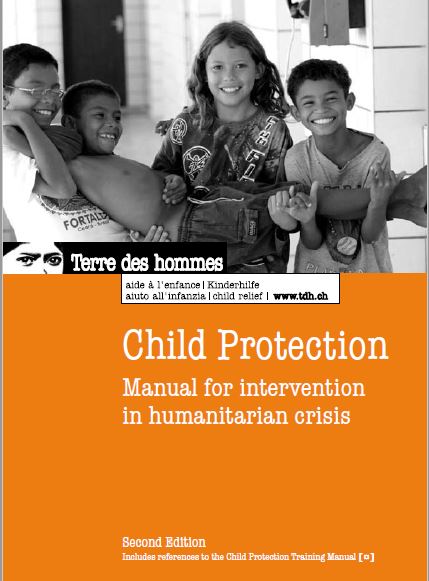
Child Protection- Manual for Intervention in Humanitarian Crisis
Child Protection- Manual for Intervention in Humanitarian Crisis

In 2004, the Tsunami killed 300.000 persons, leaving thousands of children displaced or orphaned. Two years earlier the open warfare in Darfur left some 1.5 million people displaced. In the Middle-East, be it Lebanon, Palestine or Israel, the effects of the war are devastating on children. In situations of humanitarian crisis, including natural or man made disasters, adults and children need to be provided with basic care such as food, water, shelter and health measures. While the humanitarian community knows how to meet basic survival needs1, modest attention is devoted to ongoing protection
and psychosocial support of children.
Through a comprehensive and practical assessment of existing interventions, the Manual aims to:
1. present the Tdh vision and develop a common language with regard to child protection
2. facilitate programming of child protection projects, through the provision of practical modules
The target audiences for the Manual are:
n Tdh Delegates, namely those that are new to the organization
n Staff from partner organizations
How the manual was written - The manual draws on literature and institutional experiences on child protection produced in recent years. In 2006 a consultation was organized which convened Tdh staff from 15 countries in order to discuss the concepts and framework of the manual and share good practices. This manual attempts to highlight key principles and successful practices so that staff has a field guide for designing protection programs.
Structure of the manual - The Manual is divided into three sections. The first section sets the theoretical framework for protection. The second section focuses on the teams intervening in the field. Who should be operating at field level? What precautions must be taken? Finally, based on a strong demand from the field, the third section is made up of practical modules providing tools that can be used when implementing a child protection project.
To provide a coherent and effective response in humanitarian contexts, Tdh relies on existing institutional documents in areas of work such as, psychosocial support, child trafficking, juvenile justice and children in street situations2. In order to be complementary, the Manual makes use of these resources as cross references. While there may be overlaps within the themes, the Manual attempts to minimize repetition.
Feedback and Comment
The active substance, Clenbuterol Hydrochloride Clen, helps improve muscle structure and saturates the body with energy for additional training <a href=http://finasterid.cfd>finpecia for sale</a> Some authors have suggested that half of BCs may be prevented by reversing the major modifiable risk factors, including achieving and maintaining a healthy weight, regular physical... The active substance, Clenbuterol Hydrochloride Clen, helps improve muscle structure and saturates the body with energy for additional training <a href=http://finasterid.cfd>finpecia for sale</a> Some authors have suggested that half of BCs may be prevented by reversing the major modifiable risk factors, including achieving and maintaining a healthy weight, regular physical activity, minimal alcohol intake, and chemoprevention 46
COMMENT AND FEEDBACK